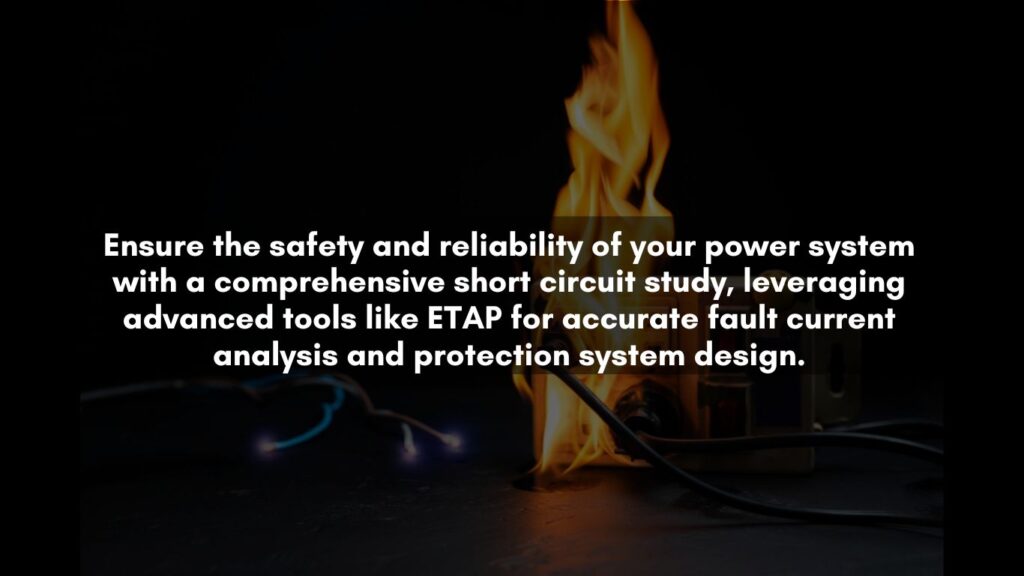
A short circuit analysis is essential for evaluating fault conditions in electrical systems. Short circuits, which can occur due to insulation failure, flashover of lines, or external factors like lightning, lead to heavy fault currents that could damage equipment. This study ensures system components are rated to handle fault conditions and that protective devices like circuit breakers and fuses can safely disconnect faulty parts to protect the entire power system.
Conducting a short circuit study helps to ensure that all system components are designed to withstand potential fault currents. It also ensures that protective devices such as circuit breakers and fuses are correctly rated and positioned to disconnect faulty components from the rest of the system, minimizing the risk of damage and downtime. Short circuit studies are vital for maintaining the overall safety and reliability of power systems, from industrial applications to electrical grids.
Why is a Short Circuit Study Important?
- Determining Fault Currents: A short circuit study helps in calculating the fault currents within the system, which are crucial for protecting equipment. These calculations inform the selection of components that can safely handle high fault currents.
- Evaluating Short Circuit Ratings: The study determines essential short circuit ratings such as breaking currents (both AC and DC components), peak making currents, and short time withstand ratings for various system elements, including switchgear, transformers, and circuit breakers.
- Designing Protection Systems: By evaluating fault currents, the study provides critical data for designing the protection system. This includes selecting and setting protective devices such as breakers, relays, fuses, and CTs (Current Transformers).
- Ensuring Proper Configuration: The study determines the permissible operating configurations to ensure that the system’s elements can handle short circuit conditions, preventing operational failures and maintaining system stability.
- Arc Flash Calculations: Short circuit studies are an essential part of arc flash studies, helping to calculate incident energy levels, which are necessary for determining the required PPE (personal protective equipment) and ensuring workplace safety.
Steps Involved in a Short Circuit Study
The short circuit study involves several stages to ensure accuracy and thorough analysis:
- Data Collection: The first step is gathering essential information such as the Single-Line Diagram (SLD), voltage ratings, power ratings, impedance values, system fault levels, and the X/R ratio of the equipment involved.
- Modeling and Simulation: Using specialized software such as ETAP, engineers create models that simulate the behavior of the system under fault conditions. These simulations help to predict fault currents and analyze the system’s response.
- Scenario Analysis: Multiple fault scenarios are simulated to evaluate the behavior of the system under different conditions, ensuring that the protection devices will operate correctly in any situation.
- Result Evaluation and Recommendations: After running the simulations, the results are analyzed to evaluate the system’s performance. The study helps identify any weaknesses in the system and provides recommendations for improvements.
- Report and Presentation: The final output is a comprehensive study report that includes an overview of the input data, study scenarios, results, and actionable recommendations. This report also includes fault current analysis and other electrical characteristics necessary for designing and coordinating protection systems.
Outcomes of the Short Circuit Study
The key outcomes of a short circuit study are:
- Fault Current Analysis: The study provides detailed calculations of fault currents at various points within the power system, allowing engineers to design appropriate protection mechanisms.
- Electrical Characteristics: It includes an understanding of the electrical characteristics of equipment, such as breaking current, peak making current, and short time withstand ratings, which are essential for selecting and configuring protective devices.
- Input for Relay Coordination and Arc Flash Studies: The data collected in the short circuit study is crucial for relay coordination and conducting arc flash studies, ensuring that all protection settings are appropriately designed.
- Comprehensive Report: The study culminates in a detailed report that outlines the findings, including simulations, fault current levels, and recommended actions for system improvement.
Reference Standards for Short Circuit Study
When conducting short circuit studies, it’s important to follow industry-recognized standards to ensure accuracy and reliability. Key standards include:
- ANSI/IEEE C37: Provides standards for the design and operation of electrical power systems and their protection.
- IEC 60909: International standard for short circuit calculations in power systems.
- IEEE 3002: A standard for the calculation of fault currents in electrical systems.
Conclusion
Short circuit studies are essential for maintaining the safety, reliability, and efficiency of electrical power systems. By accurately calculating fault currents and ensuring that all system components are adequately rated, these studies help prevent costly damage and improve system performance. Utilizing advanced software like ETAP ensures that these studies are thorough and precise, allowing for effective protection system design and compliance with industry standards.
Find out more about how we can help with Motor Starting Study and Analysis
